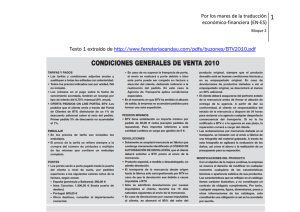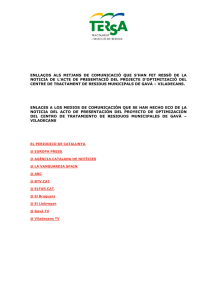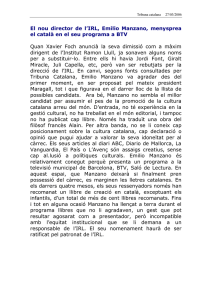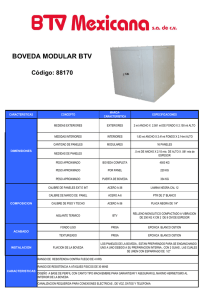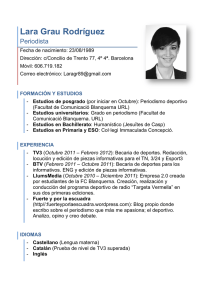Ficha tecnica
Anuncio
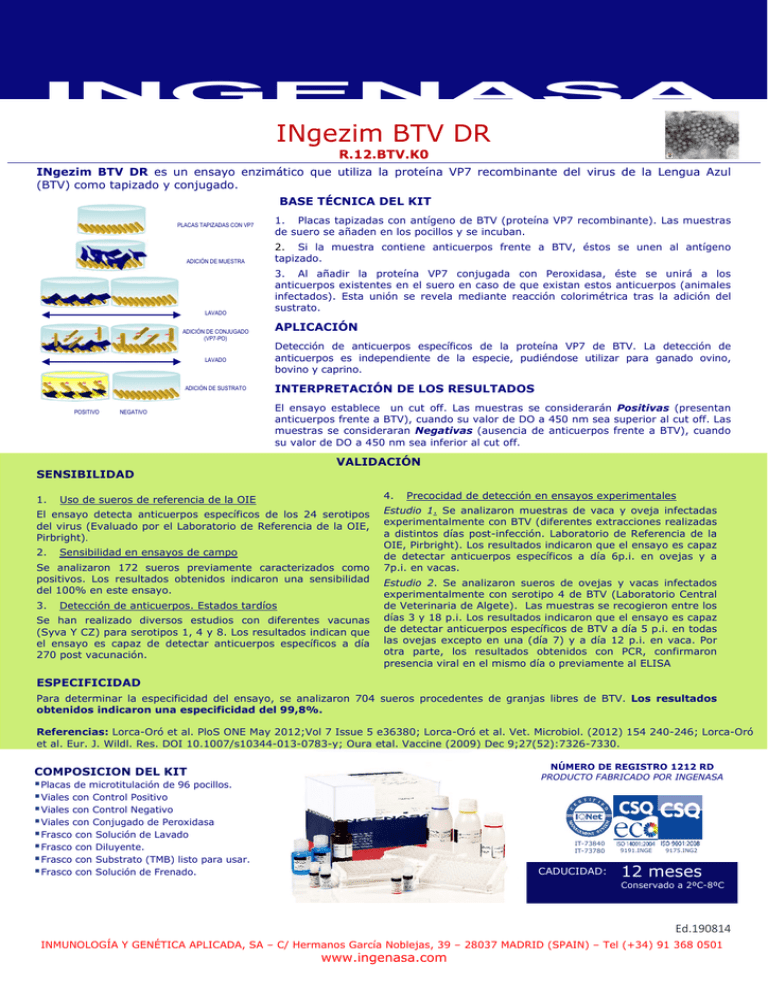
INGENASA INgezim BTV DR R.12.BTV.K0 INgezim BTV DR es un ensayo enzimático que utiliza la proteína VP7 recombinante del virus de la Lengua Azul (BTV) como tapizado y conjugado. BASE TÉCNICA DEL KIT PLACAS TAPIZADAS CON VP7 ADICIÓN DE MUESTRA LAVADO ADICIÓN DE CONJUGADO (VP7-PO) LAVADO ADICIÓN DE SUSTRATO POSITIVO NEGATIVO 1. Placas tapizadas con antígeno de BTV (proteína VP7 recombinante). Las muestras de suero se añaden en los pocillos y se incuban. 2. Si la muestra contiene anticuerpos frente a BTV, éstos se unen al antígeno tapizado. 3. Al añadir la proteína VP7 conjugada con Peroxidasa, éste se unirá a los anticuerpos existentes en el suero en caso de que existan estos anticuerpos (animales infectados). Esta unión se revela mediante reacción colorimétrica tras la adición del sustrato. APLICACIÓN Detección de anticuerpos específicos de la proteína VP7 de BTV. La detección de anticuerpos es independiente de la especie, pudiéndose utilizar para ganado ovino, bovino y caprino. INTERPRETACIÓN DE LOS RESULTADOS El ensayo establece un cut off. Las muestras se considerarán Positivas (presentan anticuerpos frente a BTV), cuando su valor de DO a 450 nm sea superior al cut off. Las muestras se consideraran Negativas (ausencia de anticuerpos frente a BTV), cuando su valor de DO a 450 nm sea inferior al cut off. VALIDACIÓN SENSIBILIDAD 1. 4. Uso de sueros de referencia de la OIE El ensayo detecta anticuerpos específicos de los 24 serotipos del virus (Evaluado por el Laboratorio de Referencia de la OIE, Pirbright). 2. Sensibilidad en ensayos de campo Se analizaron 172 sueros previamente caracterizados como positivos. Los resultados obtenidos indicaron una sensibilidad del 100% en este ensayo. 3. Detección de anticuerpos. Estados tardíos Se han realizado diversos estudios con diferentes vacunas (Syva Y CZ) para serotipos 1, 4 y 8. Los resultados indican que el ensayo es capaz de detectar anticuerpos específicos a día 270 post vacunación. Precocidad de detección en ensayos experimentales Estudio 1. Se analizaron muestras de vaca y oveja infectadas experimentalmente con BTV (diferentes extracciones realizadas a distintos días post-infección. Laboratorio de Referencia de la OIE, Pirbright). Los resultados indicaron que el ensayo es capaz de detectar anticuerpos específicos a día 6p.i. en ovejas y a 7p.i. en vacas. Estudio 2. Se analizaron sueros de ovejas y vacas infectados experimentalmente con serotipo 4 de BTV (Laboratorio Central de Veterinaria de Algete). Las muestras se recogieron entre los días 3 y 18 p.i. Los resultados indicaron que el ensayo es capaz de detectar anticuerpos específicos de BTV a día 5 p.i. en todas las ovejas excepto en una (día 7) y a día 12 p.i. en vaca. Por otra parte, los resultados obtenidos con PCR, confirmaron presencia viral en el mismo día o previamente al ELISA ESPECIFICIDAD Para determinar la especificidad del ensayo, se analizaron 704 sueros procedentes de granjas libres de BTV. Los resultados obtenidos indicaron una especificidad del 99,8%. Referencias: Lorca-Oró et al. PloS ONE May 2012;Vol 7 Issue 5 e36380; Lorca-Oró et al. Vet. Microbiol. (2012) 154 240-246; Lorca-Oró et al. Eur. J. Wildl. Res. DOI 10.1007/s10344-013-0783-y; Oura etal. Vaccine (2009) Dec 9;27(52):7326-7330. NÚMERO DE REGISTRO 1212 RD PRODUCTO FABRICADO POR INGENASA COMPOSICION DEL KIT Placas de microtitulación de 96 pocillos. Viales con Control Positivo Viales con Control Negativo Viales con Conjugado de Peroxidasa Frasco con Solución de Lavado Frasco con Diluyente. Frasco con Substrato (TMB) listo para usar. Frasco con Solución de Frenado. IT-73840 IT-73780 CADUCIDAD: 9191.INGE 9175.ING2 12 meses Conservado a 2ºC-8ºC Ed.190814 INMUNOLOGÍA Y GENÉTICA APLICADA, SA – C/ Hermanos García Noblejas, 39 – 28037 MADRID (SPAIN) – Tel (+34) 91 368 0501 www.ingenasa.com INGENASA INgezim BTV DR R.12.BTV.K0 INgezim BTV DR is an immunoenzymatic assay which uses BTV’s VP7 recombinant protein, both, to coat the plate and as conjugate. TECHNICAL BASIS OF THE KIT PLATES COATED WITH VP7 SAMPLE ADDITION WASHING CONJUGATE ADDITION (VP7-PO) WASHING SUBSTRATE ADDITION POSITIVE NEGATIVE 1. Plates are coated with BTV’s VP7 recombinant protein. Sera samples are added to the wells and incubated. 2. If the sample contains specific antibodies to BTV, they will bind to the antigen. 3. When a HRPO conjugated recombinant VP7 protein is added, it will bind to the antibodies present in the sample if the serum sample is positive. This binding is detected by adding a specific substrate. APPLICATION Detection of specific antibodies to BTV’s VP7 protein. The detection of antibodies is independent of the specie, being therefore able to use it in bovine, ovine or goat sera samples. INTERPRETATION OF THE RESULTS The assay establishes one cut off. Samples will be considered Positive (i.e. contains specific antibodies to BTV), if its OD value is higher than the cut off. Samples will be considered Negative (i.e does not contain specific antibodies to BTV), if its OD value is lower than the cut off. VALIDATION SENSITIVITY 4. 1. Study 1. In this study, BTV experimentally infected cattle and sheep were used (extractions taken at different days post infection. OIE Reference Laboratory, Pirbright). The results obtained indicated that the assay is able to detect specific antibodies at day 6 p.i for sheep and at day 7 p.i. for cattle. Using OIE Reference Sera The assay detects antibodies specific of the 24 known serotypes (Evaluated by the OIE Reference Laboratory, Pirbright). 2. Sensitivity in field trials. A set of 172 sera previously classified as positive, were analyzed. The results obtained indicated that sensitivity was 100%. 3. Detection of late humoral response Several studies using different vaccines from Syva and CZ (serotypes 1, 4 & 8) have been made. The results obtained indicate that the assay can detect specific antibodies to BTV at day 270 post vaccination. Precocity of the assay (experimental studies) Study 2. Sera from BTV serotype 4 experimentally infected cattle and sheep were taken between days 3 and 18 p.i. (Algete) and analyzed. The results obtained indicated that the assay is able to detect BTV’s specific antibodies at day 5 p.i. for sheep in all cases except one (day 7). In cattle, antibodies were detected at day 12 p.i. The results obtained with PCR confirmed the presence of virus before than or at the same day as the ELISA. SPECIFICITY In order to determine the specificity of the assay, a set of 704 sera from herds catalogued as free of BTV were analyzed. The results obtained indicated that the specificity was 99.8%. References: Lorca-Oró et al. PloS ONE May 2012;Vol 7 Issue 5 e36380; Lorca-Oró et al. Vet. Microbiol. (2012) 154 240-246; Lorca-Oró et al. Eur. J. Wildl. Res. DOI 10.1007/s10344-013-0783-y; Oura etal. Vaccine (2009) Dec 9;27(52):7326-7330. COMPOSITION OF THE KIT REGISTRATION NUMBER 1212 RD PRODUCT MANUFACTURED BY INGENASA Microtritation plates of 96 well Vials with Positive Control Vials with Negative Control Vials with Peroxidase Conjugate Bottle with Washing Solution IT-73840 IT-73780 Bottle with diluent 9191.INGE 9175.ING2 Bottle with stop solution Bottle with substrate (TMB) ready to use SELF LIFE: 12 months Stored 2ºC-8ºC Ed.190814 INMUNOLOGÍA Y GENÉTICA APLICADA, SA – C/ Hermanos García Noblejas, 39 – 28037 MADRID (SPAIN) – Tel (+34) 91 368 0501 www.ingenasa.com
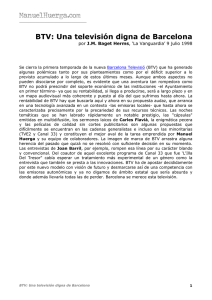
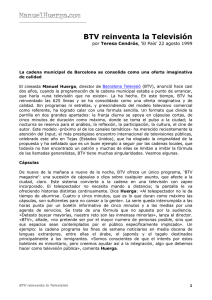
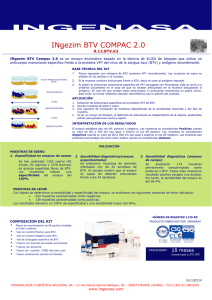
![[Video] ¿La economía argentina en crisis?](http://s2.studylib.es/store/data/004112581_1-a28c86c5677d1d7a278b22d60ad19454-300x300.png)
